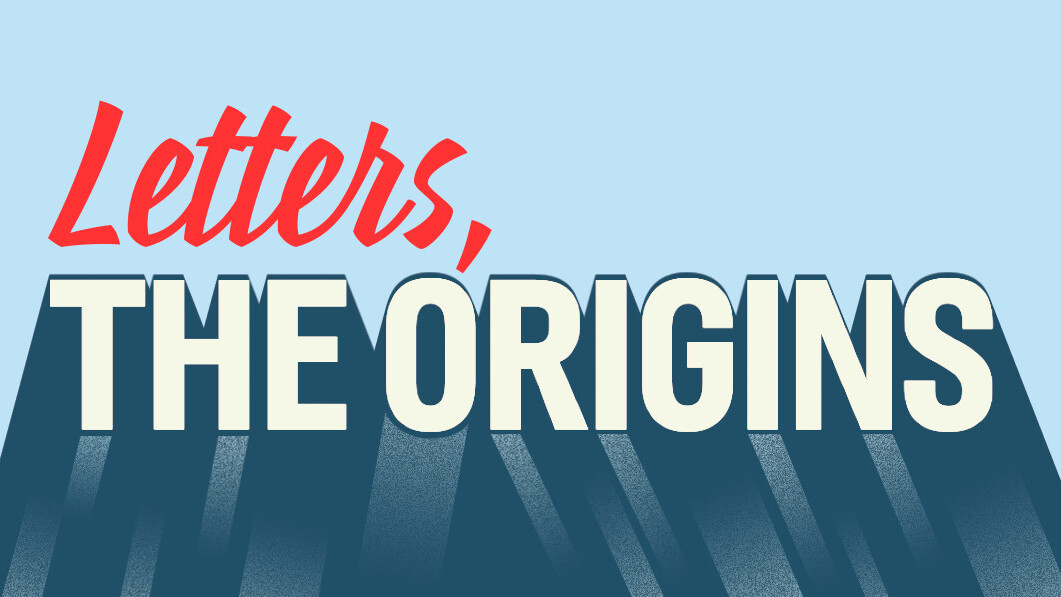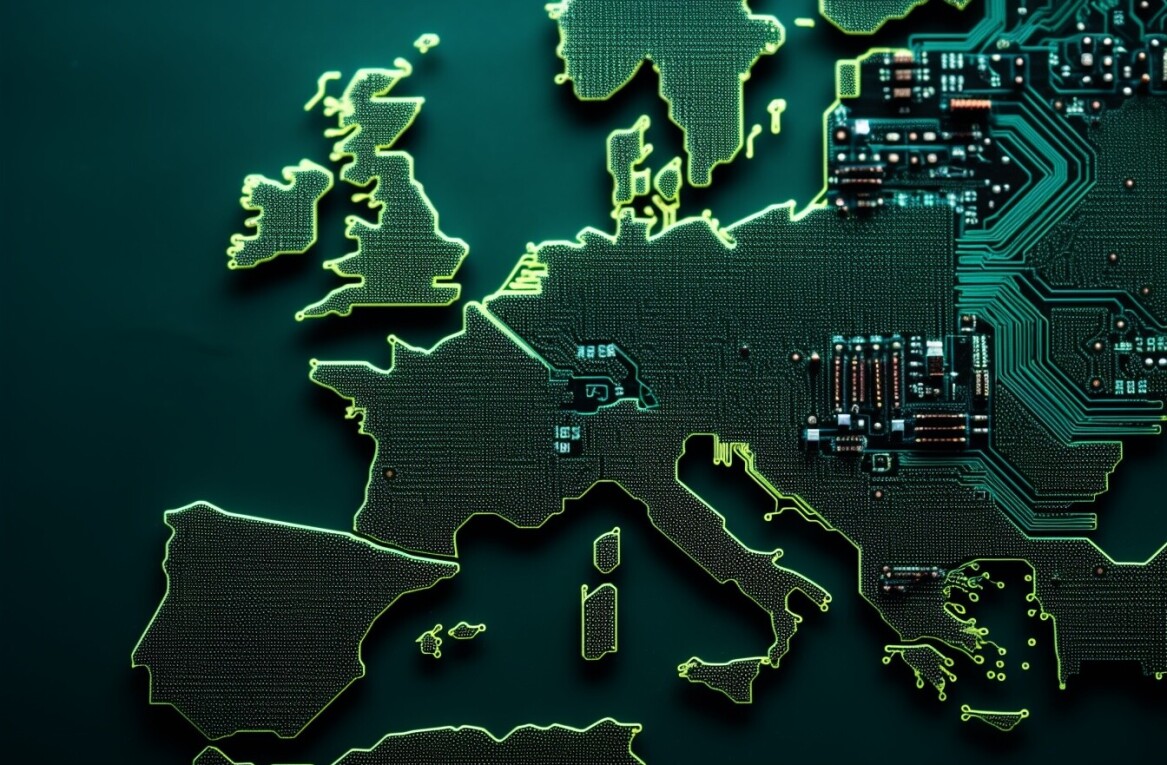
This post originally appeared on the Fontyou blog, and has been adapted with permission.
You may know the philosophy of Andy Warhol or the career path of Zinedine Zidane from A to Z. But do you know the origins of the letters on this page? All of our current alphabetic signs have a pictographic (an Egyptian) origin, and took shape over centuries.
In this article, we’ll tell you the stories of the 26 Latin alphabet letters that began around 114 A.D. A bit of trivia for you, the letter J didn’t emerge till around around 1400 A.D. Looking at the table below, you can see distinct epochs for each style of writing. From Kemetic (3200 B.C.), Semetic (1500 B.C.), Phoenician (1000 B.C.) and Greek (600 B.C.) alphabets. Each one characterised by a style and adaptation of the previous era’s code of language.
Each of the below letters features the transition each letter made into its current form. Ready? Let’s go.
A
The ox was the alpha male of the 3200 B.C.’s agricultural market. Saying to every scribe that he was the one, he started to be big headed. Phoenicians had enough of his bragging and made his head revolve 90-degrees, just to keep him quiet. Greeks have been more extreme and turned him 90-degrees more, horns and muzzle upside down. Aaaaah! No more “I’m the first, the last, your everything” singing!
—
B
The first house pictogram has an open door. The second only represents four walls, no way to go in or go out. On the third pictogram, a door reappears but leads to a wall. The fourth and Greek one squarely represents a very spiky and inaccessible property with two triangular rooms. Probably because it’s Queen B’s house and she doesn’t want to be disturbed while recording the beta version of her new album.
—
C – G
When you throw a boomerang, you can see it flying like a beautiful plusia gamma (nocturnal butterfly) and drawing loops and arcs of a circle in the sky. If you look attentively, you will recognize C and G in these boomerang trajectories. Be careful not to be too contemplative though, even if it has been thrown from 3200 B.C., a boomerang can always come back and hurt you.
—
D
A door can become a triangle which can become a letter. Four doors can light your fire.
—
E
The man is happy, he will give birth to a new letter! Not just a simple letter, but an “e psilon” ( a “simple e”). There is not much to say: he loves E! And E loves him too!
—
F – Y – U – V – W
The hook pictogram is almost the origin of Fontyou, or at least the origin of the letters F and Y. Three other Latin letters come from the Greek upsilon: U, V, and W. And one movie with Dustin Hoffman arises from the Semetic wāwu.
—
Z
Z is a sharp letter. In the Kemetic alphabet, it is represented by an arrow. In the Phoenician alphabet, it turns (90-degrees) to be a weapon and looks more like a dagger handle. In the Latin alphabet, it looks like it has been drawn by a sword. Or Don Diego de la Vega’s rapier…
—
H
By tying threads, interlacing ropes, knitting wool… we can create a lot of forms and very different structures. For example marine knots, stitches, a Christmas’ pullover with a snowman and of course, the letter H.
—
I
“For the arm to raise, the cultures weight to carry, a vertical stroke letter to become, patience you must have, my young padawan”. (Yoda)
—
K
In a cupped hand, you can keep things like a key, a karaoke mic, a little knife, a Kappa shoe, a knackwurst sandwich, one of Kim’s boobs, a kiwi, a kazoo, but no kryptonite. Unless you are not Superman.
—
L
- Draw a staff (a walking stick) with the handle on the left.
- Turn your drawing in a symmetrical and horizontal way. You obtain the reflection of the first drawing.
- Turn your second drawing in a symmetrical and vertical way.
- Do not confuse the Greek letter lambda with the Lambada (thank you Wikipedia!).
- Draw a less curvy version of your third drawing.
—
M
Under the Egyptian sky, the water luxuriates in soft and regular waves. We dive in to the Aegean Sea. Mmmmmm, how pleasant it is to be carried by the tides!
—
N
Great mnemonic way to remember the origin of the letter N: During sloughing (skin renewal), the snake is naked. In French, “naked” is translated into “nu” (unless the adjective refers to a female (“nue”) or a group of males (“nus”) or a group of females (“nues”)). The snake is then “nu”, like the Greek letter, and the latin letter: N. Cool trick, isn’t it!
—
X
At the origin of writing, there was a fish. A big and appetizing fish. So appetizing that Phoenicians devoured it and only left its bones. Greek kept two fishbones and crossed them. Today, we can see inside the fish thanks to X-rays.
—
O
Round as a pupil and as the two eyes lOOking at the mOOn: O.
—
P
Yesterday, in Kemetic alphabet, P was an open mouth. Today, in Smiley alphabet, P is a mouth which sticks its tongue out. The Greek letter “π” represents (since mid-18th century) a mathematical constant number, of which decimal approximation is 3.14159265358979323846264338327950288419716939937510… Hard to pronounce, especially with an open and smiling face!
—
Q
Monkey, as a Q, has a tail, and it’s not a cautionary tale or even monkey business.
—
R
For centuries, the head believed its best profile was the left one, while it’s the right that gives it the air (R) of being prettier.
—
S
Dreaming about teeth can be a symbol of frustration or vitality. But don’t worry, this is not Sigmund’s interpretation or a stigmatization!
—
T
A cross in the right place × a Semetic plus sign + more Phoenician cross + a Greek symbol for life and/or resurrection = the Latin letter T.
—
Let me draw a check mark with a twisted rope on an ox’s head eating a snake with no hand, and a hook, an eye and a hook again, for reading this article. Matter of form and content!
Get the TNW newsletter
Get the most important tech news in your inbox each week.


























